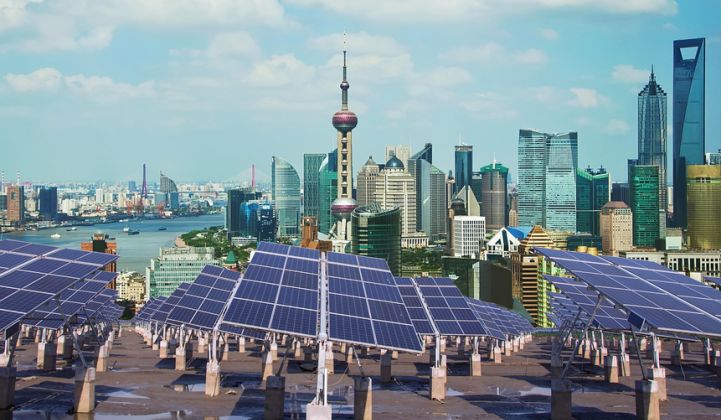China, the fastest-growing solar market in the world, could now see an extra boost from the widespread use of power-purchase agreements.
UGE International and Blue Sky Energy Efficiency, an Asia-focused financier, recently partnered up to deliver commercial-scale solar in China for zero money down, lowing customers’ energy bills from day one. Through the use of a PPA (buying energy, not solar equipment -- a mainstream practice in the United States), the two companies plan to fund $10 million of projects in China over the next 18 months.
This isn’t the first instance of a PPA being used in China, but UGE appears to be the first company to deploy the financing mechanism at scale. The availability of solar PPAs could be an enormous growth driver in a market that’s hungry for clean energy.
UGE has had a presence in China for years, but only made it a real market focus 12 months ago, said CEO Nick Blitterswyk. It took 11 of those months to get the funding and contracts in place.
“The solar market is evolving so quickly now because the PPA has become so common in the U.S., […] and so now people are more open to doing it in China,” said Blitterswyk. “But it’s still not something that an investor is immediately comfortable with.”
“The types of investors that invest in a solar PPA are the same that invest in mortgages and other types of long-term assets. So the question about how much energy is a solar project going to produce is one that takes education,” he continued. “But once you get to that point, the returns on investment for people investing in solar assets…are generally better than mortgages and other types of long-term investments people work with.”
Electricity prices in China vary by region, but in general, commercial customers pay about 16 cents per kilowatt-hour, said Blitterswyk. Over a 20-year contract, UGE promises to save its customers at least 10 percent off of their energy bill.
China’s aggressive solar targets have made it a very enticing market for U.S. solar firms. In 2014, the country planned to install 14 gigawatts of solar, 8 gigawatts of which would be distributed generation. China recently announced it aims to install as much as 17.8 gigawatts of solar projects in 2015.
But targets don’t always translate into deals. According to the International Energy Agency, China fell short of its 2014 goal, with a total of 10.6 gigawatts of solar installed last year. It isn’t clear how much of that was distributed solar, but there are indications that China was well off of its 8-gigawatt target, due to the relative complexity of distributed solar versus utility-scale ground-mounted projects.
The Chinese market also comes with a number of procedural challenges for foreign firms, as First Solar found out. In 2009, the Arizona-based company announced plans to build 2 gigawatts of solar in Inner Mongolia. But last year First Solar had to abandon plans amid insurmountable regulatory hurdles and pressure from domestic solar firms.
UGE’s Blitterswyk said the smog in some parts of China is also challenge, because it reduces solar production, which can make investors uneasy.
But interest in China hasn’t faded. SunPower currently has two joint venture agreements in China for its low-concentration photovoltaic systems. SunEdison also has ambitious plans to build 1 gigawatt of projects across China over the next three years.
At the outset of its PPA program, UGE will focus its efforts on the eastern region of China from Shanghai to Beijing. But Blitterswyk said business could eventually expand across the country. UGE expects to announce its first signed customer contracts later this month.



